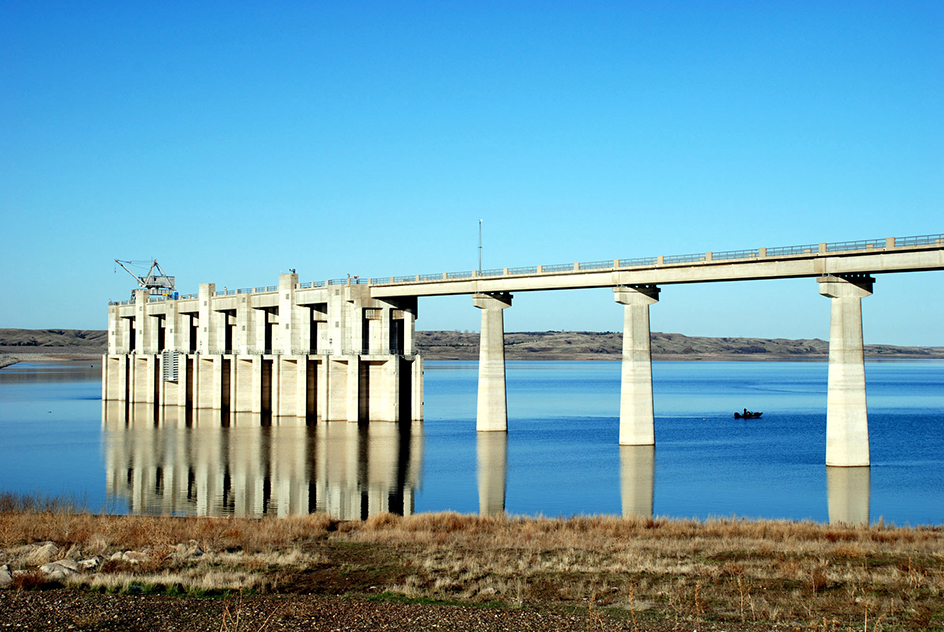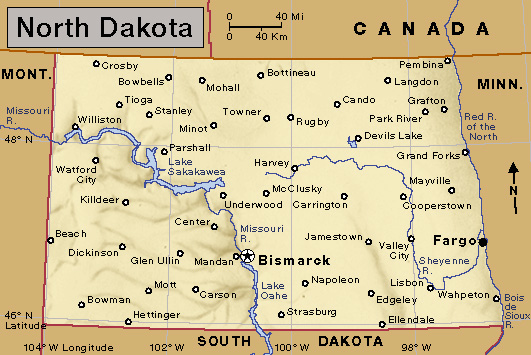Lake Oahe, << oh WAH hee, >> is one of the largest artificially created lakes in the United States. It extends from near Pierre, South Dakota, to just south of Bismarck, North Dakota. The lake was formed in the 1950’s and early 1960’s by the completion of the Oahe Dam across a section of the Missouri River in South Dakota. The lake is about 230 miles (370 kilometers) long.
Oahe Dam is a large rolled earth dam —that is, a dam made mainly of huge amounts of compacted soil. It stands about 245 feet (75 meters) high and stretches nearly 2 miles (3.2 kilometers) between bluffs along the river.

In 1944, the United States Congress passed legislation that authorized a number of flood control projects in the middle Missouri Basin. In 1948, the U.S. Army Corps of Engineers began construction on Oahe Dam. They built inward from the two riverbanks. They closed the span across the river in 1958, but they still had to do additional work to complete the structure. Engineers built the dam to control flooding and to provide water for hydroelectric power generation, irrigation, and recreation. The dam’s hydroelectric power generators came online in 1962 and 1963.

Dozens of recreation areas along Lake Oahe have beaches, boat ramps, camping sites, and nature trails. At times, water releases from Oahe Dam and droughts have led to fluctuations(frequent changes) in water levels at the reservoir. Low lake levels can cause complications for nearby communities that rely on Lake Oahe for drinking water and water-based recreation and tourism. The Standing Rock and Cheyenne River Indian reservations lie along much of the lake’s length. The lake takes its name from the Oahe Indian Mission, established among the Lakota Sioux in 1874. The name Oahe comes from a Lakota word meaning foundation or place to stand on.
Construction of the reservoir substantially changed the physical geography of the area. The project also displaced local populations, notably members of the Standing Rock Indian Reservation. Today, tribe members operate a resort and casino near Lake Oahe, benefiting economically from tourist activity in the region.
